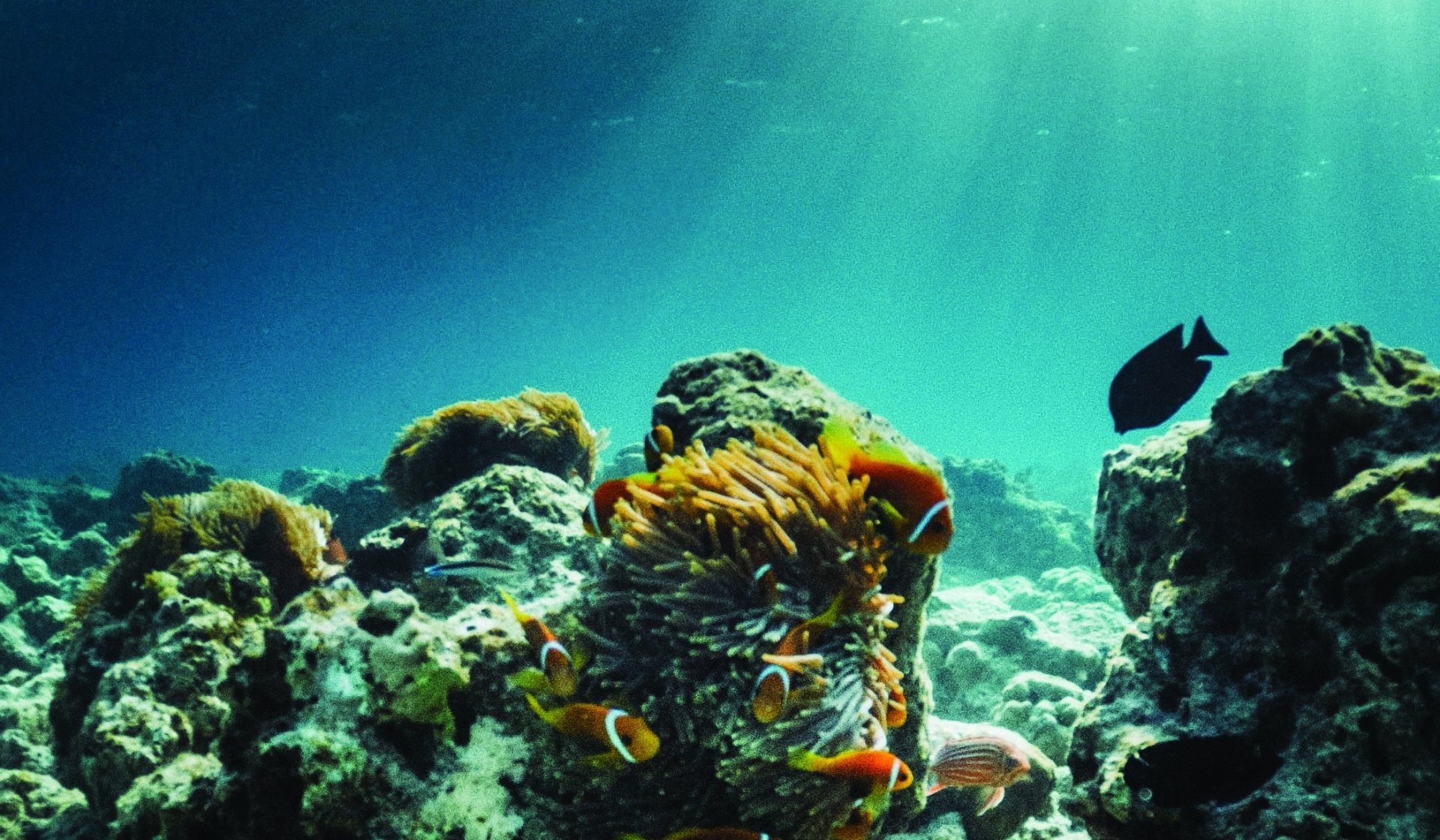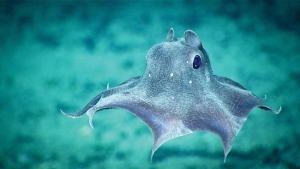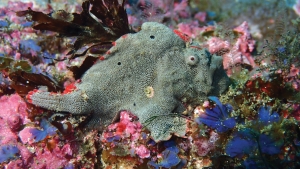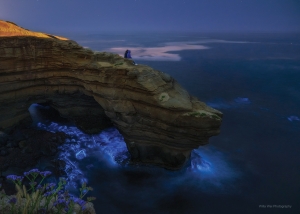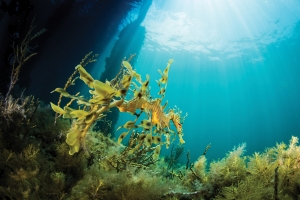Underwater Wonders
Explore the ocean blue, home to an array of extraordinary sea creatures and rare phenomena.
Few places on Earth are as uncharted as the ocean — and, sometimes, it’s hard to wrap our minds around just how vast these bodies of water are. According to the National Ocean Service, saltwater oceans make up more than 70% of the planet’s surface and hold roughly 97% of its water. These numbers are astonishingly high, but that isn’t even where the shock ends: National Geographic states that more than 80% of the ocean has never been mapped or explored, with more known about the moon and Mars than about our own ocean floor.
So it’s no wonder that unique phenomena and lesser-known marine life are scattered across the globe. From blue holes and bioluminescence to species like anglerfish, leafy seadragons and endangered vaquitas, there is much to learn about the mysteries contained in the world’s oceans.
Barrier Reefs
Similar to a standard coral reef, a barrier reef is set offshore, separated from the land by a lagoon or other body of water. Often called the “rainforests of the sea,” the diversity of life found along a barrier reef is unparalleled. These rare reefs are of incredible importance for the health of the ocean and its creatures, as they serve as a place for marine life to rest, seek shelter and find food. Many different fish can be found along these reefs, but its primary inhabitants include oysters, clams, crabs, urchins and sea stars. The Great Barrier Reef in Australia is the most famous, but others can be found in Belize and Mexico.
Dumbo Octopus
Another deep sea animal, the Dumbo octopus is able to stay out of fishing nets and has few predators on the ocean floor. As such, they are also rarely spotted by humans and, living at least 13,000 feet below the surface, they are the deepest-living octopuses in the ocean. For this reason, you won’t see them in an aquarium either, as they cannot survive due to changes in pressure between the ocean floor and the water’s surface. This tiny octopus, measuring a mere eight inches tall, was named for the Disney animated film of the same name due to its ear-like fins that protrude from the face.
Giant Tube Worm
The giant tube worm is a unique sea creature that thrives in extreme heat, often growing in the depths of the ocean near places where hot water flows out of the seafloor. What makes this marine invertebrate so interesting? Well, for starters, the giant tube worm has no mouth, no digestive tract and no access to sunlight. They solely rely on chemical energy to convert carbon dioxide into nutrients. Also astounding about these creatures is their size, as they can grow up to 8 feet.
Vaquita
Even as the most endangered marine mammals on Earth, many have never heard of the vaquita. But this rare aquatic animal, which lives in Mexico’s Gulf of California, is so imperiled that there are thought to be only 10 remaining on the planet. Thought to be endangered due to entanglement in gillnets, typically set for catching totoaba, vaquita is the smallest marine mammal, measuring between 3 to 5 feet in length and weighing less than 100 pounds. An incredibly rare sight to behold, the vaquita’s unique facial markings of a black ring around each eye and black curved lips are often compared to the appearance of a smiling panda. Vaquitas are but one of the many species that help make the gulf a place of biological importance due to its unique diversity.
Anglerfish
Venture roughly a mile under the water’s surface to discover the anglerfish, which lives in the deep sea within the Atlantic and Antarctic oceans. One of the most interesting adaptations fish, which can reach over 3 feet in length and lives in complete darkness, is its dorsal spine. In females, the anglerfish’s dorsal spine extends far past its body, almost like a fishing rod, and hangs a “lighted lure” over their mouth. By pulsing the light and moving the lure back and forth, these fish successfully attract pelagic crustaceans and other prey — which can be scarce to find in the deep sea.
Blue Holes
Commonly believed to have formed during the Ice Age, these large sinkholes filled with water when sea levels rose and now serve as rich ecosystems for microbial biodiversity. Due to the lack of oxygen within blue holes and the time period in which they formed, they also contain well-preserved fossils of plants and animals. The majority of blue holes can be found in the Caribbean, namely Belize and the Bahamas, but still others are located in Egypt, China, Malta and even the United States. The Great Blue Hole is the largest blue hole in the world. It is located roughly 60 miles offshore from Belize City and is part of the Belize barrier reef system. It measures about 1,000 feet in circumference and approximately 400 feet in depth.
Bioluminescent Tides
Photographers around the world flock to the sea on late-night adventures in the hopes of capturing the glowing waves of bioluminescent tides. Occurring everywhere from California’s coastline to Taiwan, the Maldives, New Zealand, Sea Island and beyond, this rare phenomenon happens as the result of algae bloom. When bioluminescent creatures, called dinoflagellates, gather in large colonies, the movement of the water causes the phytoplankton to glow and sparkle with a bright blue hue. It’s truly a captivating sight. Underwater Crop Circles First located in 1995, divers identified mystifying 7-foot-wide circle patterns on the seafloor off the coast of southern Japan. In 2011, scientists discovered that the delicate, symmetrical designs are created by pufferfish as part of their mating process. The male pufferfish flap their fins to make the patterns before decorating them with sediment and shells. While it has yet to be determined what the females are looking for, if they’re impressed with the circle, they lay their eggs in the center, then the male completes the fertilization process.
Leafy Seadragon
While many are familiar with seahorses, few have heard of the leafy seadragon, found in reefs or beds of seagrass off the coast of Australia. An interesting adaptation, leaflike limbs are affixed to their head, body and tail so that the leafy seadragon can easily be camouflaged within their environment. Their long, thin snouts allow them to suck up food and just like their seahorse relatives, the males give birth, with the females laying eggs under the males’ tails. The oceans are the true final frontier of Earth. As technology enables scientists to explore further and deeper into the salty seawater depths, we’ll continue to learn more about the ocean’s great mysteries, flora and fauna.
SEA ISLAND SPECIES
While the world’s oceans have an incredible amount of rare and unique animals and phenomena, the local Georgia coastline is home to some special sea life of its own.
Sea Island Lead Naturalist Haley Watkins says that Eastern oyster reefs form along the mud banks and tidal flats of the river and on some parts of the beaches, creating a reef-like ecosystem for fish, shrimp, blue crabs and more. “It’s a nursery ground, or feeding ground, for all kinds of species that ultimately venture offshore into the Atlantic Ocean and become a global species,” Watkins shares.
One of the most unique local species is the horseshoe crab, which dates back 350 million years. The ancient species has a hard armor to protect it as it ventures along the ocean floor and along the beach.
Bottlenose dolphins can also be found near Sea Island, and the local populations have their own behaviors that set them apart from cetaceans you’ll find elsewhere. “Bottlenose dolphins are known to strand feed on the Georgia coast, which is when they herd a school of fish up onto the beach or up onto the banks of the river, then glide on just a few inches of water and catch those fish on land,” Watkins explains. “It’s a really smart behavioral trait that we see out of our bottlenose dolphins that you really don’t see in many other parts of the world.”
This region remains one of the most diverse in the U.S. “It’s amazing how many different species rely on this habitat that you can find right in the Black Banks River behind Sea Island,” Watkins says. One of the most rare and vulnerable marine mammals, the Florida manatee, also frequents the waters here. “Across the Georgia coast, we have huge swings in high tide and low tide — sometimes over 9 feet — so the water and habitats are constantly changing. I think that’s something that creates a really unique environment for a lot of wildlife.”




